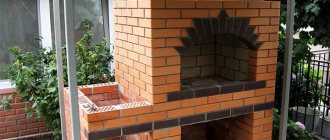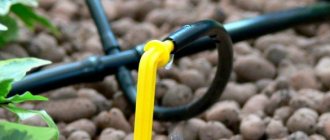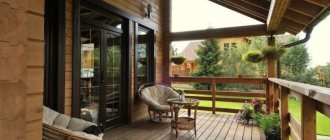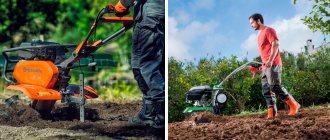Do you want your vegetable garden to become your pride? Read our article on how to do this
How to design beautiful beds for the lazy, tall and smart beds - this is what a gardener needs to know who wants to make his life as independent as possible from gardening worries. If you wish, you just need to master the method of designing lazy beds, which you can see in the following photos. A garden bed of this type will allow you to enjoy a well-deserved rest at the dacha and will not require weeding every time. In addition, it is not only convenient, but also increases crop productivity.
The easiest way to build smart beds is on a flat surface
Seedlings in a high bed always receive enough sunlight
Today there is a strong trend towards switching to healthy organic food. Classic organic farming is not very effective and is burdened with the risk of not getting a harvest at all. But smart beds are a great help in this task
Everyone knows how much time and effort needs to be devoted to each planted crop, which, however, sometimes does not even justify the result: the seedlings may not germinate or do not ultimately produce a normal amount of harvest. In this case, you should pay attention to the technology of lazy beds on your site!
Multi-level narrow beds and paths sprinkled with pebbles
Small beds you can make yourself with a minimum of tools
Advantages and disadvantages
In addition to solving problems with waterlogging, high beds in the garden allow you to sow or plant plants 2-3 weeks earlier: raised above the ground, they warm up more actively due to the fact that the sun warms the walls. This is also facilitated by the decomposition processes occurring in plant waste, which constitute a significant part of the backfill. That is why such beds are also called warm. If you place arcs on such a bed and cover them with spunbond or other similar material, then the harvest can be harvested even earlier.
The device is more problematic in regions with hot climates. The task in this case is not to better heat the earth, but to keep it from overheating. But this can also be solved: use materials with poor thermal conductivity, for example, wood, to fence high beds. For a better effect, you can make double walls, between which you can fill, for example, sawdust, lay polystyrene foam, or you can leave an air gap - better thermal insulation. In hot climates, it is better to paint the outer wall with white paint or whitewash it. It is known that light-colored surfaces heat up less. In this case, it will be possible to keep the root system from overheating: in the south the earth sometimes gets very hot and the higher the plant is, the cooler it will be. You can also stretch the same covering material over the beds. It not only retains heat, but also protects against overheating.
Beet harvest in a high bed
Raised beds can also be a good option on infertile lands. It is more convenient to lay out the imported soil in beds rather than distribute it over the entire site. The compost layer, which is located under the soil layer, contributes to maintaining fertility.
The problem of arid regions is also being solved. In this case, the inside of the fence for a high bed is coated with bitumen mastic or covered with film, and a roll of waterproofing material is placed on the bottom (on the mesh) (roofing felt will quickly rot, so it’s better to use one of the modern types of waterproofing). It will not be possible to achieve complete waterproofing, but it will be possible to retain moisture inside in sufficient quantities - yes.
Carrots - one to one. The best one is in a high bed, although the same variety was planted in a regular bed
As you can see, with a balanced approach, almost any problem can be solved. Raised beds have few disadvantages, but they are not without them:
- In most cases, you have to make a fence, and this costs money.
- The complexity of the process. Again, it takes time to make fences, and there is also a fair amount of earth and plant debris to move around, which is hard work.
- Mole crickets and other similar animals thrive in rotting leaves, branches, and bark. We have to fight them.
- Fertility has to be maintained by updating or completely replacing the “filling”.
That's all the shortcomings. If you decide to arrange raised beds, be prepared for a considerable amount of work. But the harvest will be many times greater. You can make one or two beds for testing. And then decide whether you need them or not.
Principles of creating garden beds at the dacha: ecological and traditional approach
Summer residents practice two approaches to growing crops on the site - ecological and traditional. Moreover, one of them completely contradicts the other. The traditional method is gradually becoming a thing of the past. This principle of soil cultivation is labor-intensive and harms the ecosystem. With the traditional approach, a person independently controls and regulates the condition of the soil, as well as all the processes occurring in it.
Traditional farming principles include:
- treatment with herbicides;
- digging up the soil twice a year (autumn and spring);
- use of fertilizers in large quantities.
The traditional method of soil cultivation requires the annual application of chemical fertilizers, which negatively affects the quality of the crop.
As a result, beds cultivated in this way are deprived of natural capillaries. Microorganisms living in the soil gradually die off, and crop yields become scarce.
An ecological approach to creating garden beds at the dacha with your own hands refers to natural farming. This principle is based on the natural self-healing properties of soil. At the same time, humans extremely rarely interfere with the natural processes occurring in the beds. Digging is abandoned as a method of preparing soil for planting. Instead, surface loosening is used. The same applies to weeding, which is replaced by mulching.
The yield grown using ecological methods is usually lower than with traditional methods, but the quality of vegetable crops is several times higher.
The ecological principle of farming preserves the natural properties of the soil, which independently restores its structure due to the increased number of capillaries, plant roots, insects and microorganisms. Gas exchange processes improve and, as a result, a sufficient amount of nitrogen enters the roots of crops naturally.
Note! With an ecological approach, the use of chemical fertilizers is absent or minimized. Modern methods of creating beautiful garden beds in the country are built precisely on this principle.
Eco-farming is an advanced industry in modern agriculture.
Dimensions
There are no strict recommendations on this matter, and there cannot be: the conditions in the country are very different, and so are the people. There are sizes that many consider optimal.
On one site there are very high beds and not very...
So, the dimensions of the raised beds are:
- Height - from 20 cm to 50-60 cm. Look here what a difficult task it turns out to be. The higher the bed is raised, the easier it is to process - less bending. But more land and all the other “fillings” will be required. One more point: if a small bed may be covered with snow and will be covered from severe frosts, then a tall one will freeze through: the sides will also be open. For those beds where annuals are sown, this does not play any role, but for perennial strawberries, let’s say, this is a problem. Therefore, the height is chosen based on these considerations. According to the experience of many summer residents, the optimal height for strawberries is 20 cm. Then you can hope that it will not freeze.
- Width - from 60 cm to 1.2 m. Choose a distance so that it is convenient for you to cultivate the bed. A distance of 60-70 cm is chosen if the approach to the bed is only from one side. If you can reach it from both sides, you can make it a meter or more. It is important that the middle is processed without much stress.
- Length. Here everyone chooses based on the configuration of the site or their desire. There are no recommendations at all.
To prevent the bed from being too high, part of it can be buried: bury it 20-30 cm, and then put walls on top. The removed soil will be used for backfilling (there is often simply not enough soil), and the substrate from the lower coarse layers can be made thicker. And to minimize the cost of maintaining such a bed, you can use drip irrigation.
Recommendations for planning beds on a summer cottage: photos and design rules
On the Internet you can find a large number of photos of beautiful beds and flower beds; every summer resident can create such a design with his own hands. The secret lies in planning the future of the garden.
Before you get started, it is advisable to take into account some nuances:
- compatibility of crops that will be planted nearby - some plant varieties can have a positive effect on others, while some of them can be harmful. It is necessary to carefully study the issue of compatibility of crops that will grow in the beds;
By correctly combining vegetable crops, you can avoid infecting plants with diseases and pests.
- multi-level planning - correct placement of plants in height will provide each type of crop in the garden with sufficient sunlight. For example, it is better to place the tallest plantings on the north side. Gradually approaching the south, the height of the plants decreases as the amount of light increases;
An example of successful placement of beds and plants on the site.
- landscape features of the site - if the beds are located on a slope, there is a risk of washout during heavy rains. To prevent this, it is recommended to organize box beds on the site or place the seedlings in special boxes. In such conditions, you can make neat small-width beds by placing them across the slope. Due to this, water will accumulate between the rows and the need for additional watering will be minimal;
Raised beds make it easy to turn them into mini-greenhouses.
- yield – each vegetable crop has its own yield. This indicator can be used at the planning stage to find out what the number of beds and their size should be to obtain a certain amount of harvest.
How can you fence high beds?
You can use anything that can hold the soil. The most durable curbs are made from brick, stone and concrete.
Concrete and stone beds can be made this way
But brick costs a lot, and it takes a long time to work with concrete. A concrete fence is made according to all the rules: first, formwork in which the reinforcement is laid, then it is poured with concrete and they wait until it sets. But the service life is impressive - decades.
Fencing for garden beds made of concrete is the most durable and will never “float”
Brick and stone fencing is also built according to all the rules: with mortar and bandaging. To reduce brick consumption, the walls are laid in half a brick. And so that the earth does not move it, the rows are reinforced with mesh.
Half-brick brickwork by itself cannot hold the soil. Support poles required
But even in this option, you will need to install support pillars every meter. If your soil is viscous, heavy, and often waterlogged, such walls can be squeezed out. Therefore, install wooden or metal supports that will support long walls or make small beds, as for a decorative vegetable garden.
Brick raised beds for decorative vegetable garden
Fences made of expanded clay blocks have proven themselves well. Even the voids in them can be filled with soil and plants with a small root system can also be planted there: for example, some types of greens and salads.
Fence for high beds made of expanded clay concrete blocks
They also make fences for high beds from galvanized metal and slate. You can use used slate, you can buy new, wave or smooth - it doesn’t matter. Cut the sheets into strips of the required width. There is no need to fear that it is harmful. Slate contains asbestos in a bound state, and it does not dissolve with water. It is harmful when it is sawed: dust rises and enters the body through the respiratory tract. To reduce the risk, wear a respirator and wet the incision area.
Raised beds made of slate
They make fences for the garden beds from plastic. Have you changed the siding? Use it. There are old plastic panels - they are used. But plastic requires a rigid base. It is made from a metal mesh made of thick wire.
Raised beds in wire boxes
The grids can become the basis for pebbles or pellets. Only in this case will you need a double frame, inside of which stones or some other material is poured. This technique is called “gabion” and it is used to make not only fences for beds and flower beds, but also fences. But to prevent water from seeping through the walls from the gabion beds, the inside of the box is lined with a thick film.
Backfill stone fence for raised beds
The most popular fencing is made of wood. You can use boards, timber, logs. Wood is good for everything, except that it rots.
Really high beds
And since all the conditions have been created in high beds to activate this process, destruction occurs quite quickly. You can slow down the process somewhat by painting the boards or impregnating them with a bioprotective composition. But there is still no guarantee against destruction.
Cutting boards can also be used for the sides of high beds
But you can use cheap, and sometimes even waste, material: leftovers from construction, slabs, old logs, pallets, etc. If desired, you can even make a fence from branches. It is only advisable to remove the bark: it is under it that there are many larvae and woodworms. Although...they will also process the wood debris that you place at the bottom of the backfill. But you don’t need too many of them either, so it’s probably better to remove the bark.
You can even make a fence out of branches
From the same branches, only freshly cut, you can make a wicker fence. And it will also need to be lined with film from the inside: to keep water and earth inside.
Read about how to make fences here.
The frame for the beds can be woven from fresh branches or laid out from stones
You can even use straw. It is tied into small bundles, which are connected to each other using wire. It simply couldn’t be cheaper, and it holds water and temperature well. The only disadvantage of this option is that such a fence will last for a maximum of two seasons, but rather one. But it can then be used as one of the layers.
Straw fencing
Bulk beds
There are high beds without a fence: the so-called bulk beds. The soil in them is poured in the form of hills.
Bulk beds
To improve drainage, branches are placed inside such a ridge. To reduce the height of the bed (for example, for tomatoes), it is deepened a little, throwing the soil to the side. After laying the branches, it is filled on top; there is often a need for additionally imported soil. If you cannot choose row spacing deeply.
Internal structure of bulk beds
The disadvantage of this kind of garden: when watering and during rains, the top layer of soil is washed away. That’s why they started making boxes - to avoid washing out the soil.
Construction of beds made of slate
To create bulk beds, you can use both flat and wavy slate. The technology for installing beds using this method is very simple and anyone can do it.
Slate bed
Table. Wave slate
| Sheet profile | Dimensions, m | Sheet area, sq.m | Weight, kg |
| 8 wave | 1.75 x 1.13 x 0.0058 | 1,9775 | 26,1 |
| 7 wave | 1.75 x 0.98 x 0.0058 | 1,7150 | 23,2 |
Prices for flat slate
For work you will need:
- slate sheets;
- Bulgarian;
- bayonet shovel;
- a piece of chalk or pencil;
- roulette;
- level;
- rubber hammer;
- drill;
- wooden pegs or metal rods.
Step 1. Marking
In the selected area, the boundaries of the beds are marked and beacons are installed. Narrow grooves are dug along the perimeter to the depth of a bayonet. If the soil is good, then remove the entire fertile layer inside the marking, pouring it near the future beds.
Step 2. Preparing the material
Flat slate fastening option
Connecting parts of the longitudinal side of the bed
Sheets of slate are laid on a flat surface, the required length is measured and a chalk line is drawn across the waves. After this, the slate is cut along the lines using a grinder. The pegs are impregnated with bitumen mastic or waste oil, and if scraps of metal rods are used as posts, they are treated with anti-corrosion compounds.
Step 3. Installing the frame
High beds made of slate
The first sheet of slate is installed vertically in the groove from the corner of the marking. Next, place the next sheet with an overlap in one wave, level it, and beat it on top with a rubber hammer so that both sheets are at the same height. Check the location of the upper edge of the slate with a building level; if necessary, add or remove soil from below. The walls are reinforced with metal rods or pegs, which are driven in on both sides to a depth of 0.5 m. So, all the sheets of the frame are placed one by one, the trench is filled up and the horizontal level is checked again. After this, the soil near the walls is compacted and the excess is removed.
Step 4. Filling the bed
A bed made of flat slate with corners.
At the very bottom you can lay old newspapers, cardboard, pieces of wallpaper, the next layer is chopped brushwood, tree bark, sawdust. After this, small shavings are poured in, plant waste, peat or compost are laid. And all this is sprinkled on top with the soil that was taken out at the very beginning. Water the bed generously to wet all layers and leave for several days. When the bed is compacted, you can begin planting.
Layers of raised beds
Framing is only a small part of the job. The resulting box still needs to be filled. It must be said right away that the thickness of the layers depends on the height of the bed that you have chosen, so if any values are given, then they are purely approximate. In addition to the size of the bed, the thickness of the layer, for example, fertile, is influenced by the choice of plants: for some, 5 cm is enough, but for others, much more is needed.
Approximate layers for a raised bed
So, what to pour into a high bed - layers from bottom to top:
- A metal mesh with a fine mesh or a layer of geotextile is laid at the bottom. You can put cardboard. Mesh and geotextiles - protection against rodents and moles. Cardboard plays approximately the same role, but it is less effective.
- Large woody debris: thick branches, twigs, even logs and bars. This layer serves, firstly, for drainage, and secondly, moisture accumulates in the wood. The drier the climate in your region, the more wood you need. Moreover, the following wood layers too.
- Chopped small branches, bark. Other coarse plant debris will work: corn stalks, straw. Their task is also twofold. They store water and, when decomposed, release heat and nutrients. But when using corn trunks and straw, keep in mind that the bed will soon sink: these remains will rot quickly, but the yield will be high, and you can sprinkle fertile soil on top.
- Paper, thin cardboard. It is usually lined with a thin layer. Packaging cardboard is used more often, because glossy paper is not suitable, just like newspapers: lead paint is not at all what you need to fertilize plants with. If you have old unnecessary burlap (natural), you can lay it down.
- Layer of plant residues: foliage, grass, semi-decomposed sawdust. Be careful with sawdust: they strongly acidify the soil. So sprinkle them under plants that like acidic soil, or neutralize the acidity by covering them with a good layer of ash.
- Fertile land.
You can add a good portion of mature compost to the last two layers, as well as sprinkle it into the deeper layers. This will speed up the “readiness” of the raised bed for planting.
Read about how to make a pond at your dacha with your own hands here, and this article describes how to turn it into a fountain.
Garden beds in open ground
Don't like original solutions, preferring classics? Then use regular beds. The soil needs to be dug up and harrowed, after which beautiful, neat rows are formed. The width depends on the crop being grown and your habits. To ensure that the edges are even, you should pull the cord and dig up the beds, harrow, and then rake the sides. If desired, you can trim the edges with your own hands using brick, timber or other materials. Well, if you think that it is better to make high beds in the garden, then after studying the theoretical part, there will be no problems.
When is the best time to do it and what to plant?
It is better to fill a high bed in the fall. During this period, there will be enough “material” and over the winter the processes inside will gain momentum. In this case, you can plant plants in the spring and hope for a high harvest. It can be done in the spring, but there are unlikely to be any significant differences in yield: the processes have just begun and will not have a noticeable effect on the fertility of the backfill. Although you will definitely feel the difference in the amount of water for irrigation: much less water is required.
One of the options for a high bed: metal mesh and reinforced polyethylene film
Plant rotation
In the year a high bed is installed, plants that require high fertility can be planted on it: cucumbers, zucchini, zucchini, pumpkin, any type of cabbage, eggplant, tomatoes, sweet peppers. The next year you can plant greens - spicy-aromatic and leafy. Root vegetables feel good in the second year.
After the second harvest, fertility must be restored. If the contents of the bed have sagged, in the fall they add good soil mixed with mature compost. If there is nowhere to add more, remove part of the top layer (to a compost heap or into another box as part of the backfill) and replace it with fresh soil with fertilizers.
High bed for strawberries
It differs only in that covering material is spread over the finished “pie”. Holes are made in it into which plants are planted. This option leads to the fact that moisture evaporates in minimal quantities, and weeds do not grow in the aisles. The second option - mulching the soil also works well, but evaporation is more intense.
Strawberries are doing well
The peculiarity of strawberries is that their roots are located mainly on the surface. Therefore, the fertile layer may be small. But this same feature leads to the fact that in severe frosts it can die. Although a decomposition process is taking place inside the high bed, warming the soil, if the bed is without snow and not covered for the winter, the root system may freeze.
High bed for cucumbers and tomatoes
In terms of its structure, it is no different. Is it just because poles and crossbars or stretched wire are needed at the edges so that you can tie up tomato bushes or cucumber vines.
For cucumbers and tomatoes, you need to take care of the garter
You can read about organizing automatic watering for your garden or plot here.
Garden bed care
When the plants sprout, the plantings should be well watered and mulched. Weeds that break through the mulch layer are immediately removed. After harvesting, the surface is loosened and sown with green manure. Before the onset of cold weather, all vegetation is mowed down, leveled on the bed, covered with a layer of earth on top and covered with black film for the winter. Periodically it is necessary to inspect the walls of the frame, replace or repair individual sections.
The soil between the beds is most often covered with fine crushed stone, gravel, straw, and sometimes sown with lawn grass. In such conditions, the garden always remains well-groomed, weeds do not grow, and dirt does not stick to shoes. If desired, you can lay out paths of tiles and bricks, or pour concrete ones.
Video - DIY raised beds
DIY raised beds
Most often, questions arise not when laying layers in high beds, but when making the box. Since women are often involved in gardening, including making fences for garden beds, many aspects may not be clear to them. To clarify the most difficult ones, we present photo reports of making boxes from boards and slate - the most common fencing.
From boards
Several options for how to make high beds from boards were in the photo above. The main problem is usually the connection in the corners. The easiest way is to make them overlap: just put one to the other at 90° and nail them all the way through. But there are aesthetes who strive to do everything right. The correct way is to cut two boards at an angle of 45° and connect them that way. This is the option that will be demonstrated in the photo.
Planed boards treated with impregnation to slow down rotting
To make it convenient to fix the fence on the ground, vertical bars or pieces of board are nailed in increments of 1.2-1.5 m, the length of which is approximately 20 cm greater than the selected height of the bed.
We nail vertical bars so that the box is strong and can be dug in
The lower end of the block or board needs to be sharpened - this will make it easier to hammer the fence into the ground. Then take a miter box or circular saw and cut the edges at an angle of 45°. By placing two boards together we get a perfect 90° angle.
Correctly made angle
For a strong connection, we install a block on the inside of the corner, to which we nail the boards.
This is what happened. It just lies with its “burdens” up. They are driven into the ground
It doesn’t take long to make a fence for high beds made of wood, but it’s even easier to join the boards end-to-end and nail metal corners for strength (pictured below).
The simplest option
From logs
It is no more difficult to make a similar box from hewn logs. For example, this option: two long sides are made of logs, and short sides are made of pieces of boards.
The advantage of logs is that they are heavy, and due to their weight they will hold the ground well
Whitewash the finished fence: both protection from pests and a more attractive appearance.
Let's start setting up
From slate
When making beds from flat or wave slate, questions also arise about how to secure it. The easiest way is to dig it in. But this is not economical: you will have to make the stripes at least 10 cm wider and there is still no guarantee that the slate will not “float” in the spring. In the muddy ground it will simply be squeezed out en masse. It can be fixed, but it will take extra time and effort.
Therefore, most often, corners or pipes are driven in on one or both sides of the sheet, which clamp the slate and prevent it from deviating much. In the photo, the corners are driven in only from the outside: from the inside there will be pressure from the mass of layers of the high bed, so that the fence will not fall inward.
Fencing beds with slate
The junction of two sheets is secured with a special welded plate. For reliability, they can be bolted to a wooden block attached to that side.
A piece of reinforcement with a welded plate - to insure the joint of two sheets of flat slate
Another option is to make a frame. Attach a beam or corner to similar racks with welded plates - whichever is cheaper. And attach slate cut into strips to this frame (it holds well with nails, but it’s easier with self-tapping screws).
Frame made of timber in a fence for a high bed
Using the same principle - with guides - beds are made from plastic panels and other similar materials. As you understand, there is no need for particularly virtuoso skill here. The main thing is that it holds up well.
Where to place the beds - choosing a location
Yields are influenced by many factors - soil quality, planting time, timely tillage, etc. In addition to the main points, the growth of crops depends on the chosen location on the site and the compatibility of vegetables.
It is necessary to choose a place for the beds simultaneously with planning the development of the site. The vegetable garden should be located in the most illuminated area, provided with irrigation. You should also take into account soil characteristics, climatic conditions in the region, and topography. In small areas it is appropriate to place raised beds with perennial plants. If you make them mobile, crops can be harvested in a warm place for the winter, preventing them from freezing.
Crops should be located taking into account their soil requirements. Cabbage, potatoes, cucumbers, and garlic should grow in a separate zone with constant nutrition of the earth. Carrots, onions, beets, and peppers are less demanding on the soil. Simple daily watering is sufficient for such vegetables. Bean beds do not require additional care. They can be placed in a shady place.
Are fencing needed for garden beds? Types of fencing
If you want to make your garden modern, then even on 5 acres you can develop a design project using fenced beds.
What are the advantages of sides and fences:
- the area takes on a neat appearance;
- it is much easier to care for plantings;
- non-standard solutions are used;
- improvised materials are used;
- beds with sides do not crumble, moisture is better retained;
- You can use the material and color of the fences to think of any composition.
Wooden fencing
Wood is most often used due to its ease of processing and simple installation. The downside is the fragility of the material. The service life increases if the wood for the sides is treated with a special impregnation, which will protect them from rotting.
For wooden fences, any wooden parts are used: cuttings of boards, logs, planks, pegs, blocks of wood from a tree trunk.
What else can you make sides from? Experienced summer residents have found use for: slabs, shields, picket fences, clapboard scraps, slats. Installing such “fences” is not difficult; just secure them with pegs. This type of fencing can be quickly disassembled and moved.
Slate fencing
Pieces of flat and corrugated slate allow you to create a variety of configurations in your garden beds. The plus of the material is price and durability, the minus is fragility. How to make such a fence:
- First, the beds are leveled around the perimeter.
- The slate is cut into strips. A narrow ditch is dug for slate. Its depth is equal to half the width of the cut slate.
- Install the slate panels vertically and connect them together with corners.
- When filling with earth, metal pegs are placed in several places; pieces of reinforcement can be used.
- Fertile substrate is poured inside the slate fence and plants are planted.
Metal fencing
Such fences will last a long time. The main thing is that the metal is protected with an anti-corrosion agent. Many gardeners use galvanized steel as a material. The sheet is coated with polymer on top, so it will last a long time.
Stone fencing
The beds, which are surrounded by stones of different sizes and shapes, look very impressive. Such beds are durable, like the material itself. Of course, not everyone can lay stones using cement mortar, but nowadays finding a specialist is not a problem. And even if it is an expensive garden bed, it will be almost eternal. The stones will withstand various external influences and are not afraid of weather conditions. Here you can get creative and create a fence of any shape.
Sides of beds made of PVC window sill for plastic windows
Editor's Choice!
They are made from plastic window sills, what are their advantages?
- You can order any size;
- protected from scratches during transportation;
- no need to paint;
- durable, not afraid of dampness;
- durable, have stiffening ribs;
- have cavities that protect the soil from drying out and overheating;
- easy to process;
- have no disadvantages, if you find them, write in the comments
These are the beds I have at home, and these are the ones I recommend to you. Below are our beds, comment further about their advantages.
Border tape
The tape is easy to install; thanks to its flexibility, you can give the bed any configuration.
This material will last a long time, it is durable, does not fade and is resistant to frost. To install it, make a narrow trench. After installing the curb tape in the trench, fill the inner space of the trench with soil. For stability, pegs or pieces of reinforcement are inserted into the ground on both sides.
Concrete fencing
If the ridges cannot be moved, then they can be fenced off with a concrete structure. To do this, the ground is leveled near the garden bed. And they make formwork. You can deepen it by 15 cm. The height of the formwork depends on the height of the fence. The width is enough and 15 cm.
Cement mortar is poured into the formwork. And pieces of reinforcement are inserted into it to strengthen the structure. After the solution has hardened, the formwork is removed, and nutrient soil is poured into the middle of the structure.
Paths between the beds
The decorative design of the garden is completed by paths. To create a decorative path, the soil between the structures is leveled, weeds are burned down and compacted. Fine gravel and pebbles are sprinkled on top.
If there is an opportunity and desire, then the paths can be laid out with paving slabs, wooden flooring, or sheets of iron.
Fencing greenhouse beds
Gardeners who grow plants in a greenhouse have their own ways of placing beds there. The standard placement is mounds of soil on the sides. There is a path in the center providing access to the plants. Other types of beds are also created in the greenhouse. For example, as in the photo:
Three long embankments are also built in the greenhouse, only they are made narrower. It is convenient to have one wide ridge in the center and narrow ones on the sides. The paths between the beds are covered with pieces of iron, roofing felt, linoleum, and wooden flooring.
The beds are fenced off so that the soil does not spill throughout the greenhouse. For fencing they use: wood, plastic, iron, slate.











